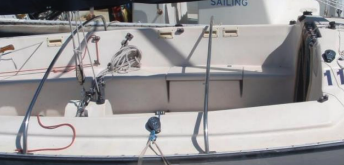
Forward & Aft Stability Bar
The Aft bar is installed toward the stern to be used by the skipper. It can be used for stability while at the helm or to aid with switching sides. The forward bar is installed toward the bow and provides stability to the crew when trimming the jib or when the boat leans to one side.
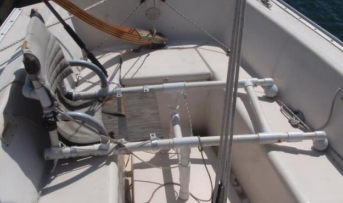
Brennan Chair
This chair can be used on either side of the tiller. Once installed, it remains on one side for the duration of the sail. It is ideal for someone with strength on one side but not the other. The chair provides moderate side stability. The backrest provides support for lower and mid back and is 18” tall. It can be installed next to the aft stability bar for additional support if needed.

Tractor Seat
The tractor seat is installed behind the main sheet and traveler in the middle of the boat (rather than on one side). It provides mid back support and side stability. The skipper uses two levers to steer the boat. As one lever is pushed/pulled the other lever automatically does the opposite (like the handles on an elliptical machine). This allows a sailor with more strength on one side to operate the boat and engage both arms in exercise safely. Grip assist gloves can be added for additional hand stability.
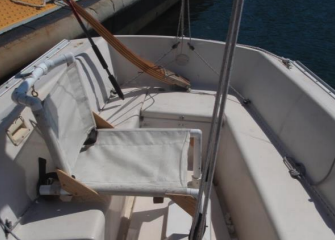
Charlie C. Chair
The Charlie Chair can be placed on either side and remains on that side for the duration of the sail. There is little side stability, but a buckle can be added for extra core support. The back rest is 18” tall and supports the lower and mid back. This chair can also be installed with the aft stability bar for extra support if needed.

Jen French Bench
This bench seat is a racecar style chair on a swivel track. The seat can switch from side to side as you sail, or remain locked on one side. A stability bar is build into the track and can be used to help move the chair from side to side. Strength in both arms and grip in both hands is necessary for the sailor to successfully steer when the seat switches sides. It has a maximum weight capacity of 200 lbs.
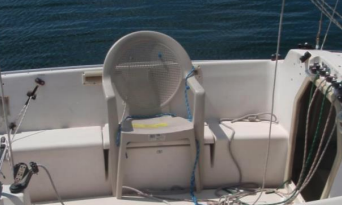
Plastic Chair
The simplest and most commonly used seat, the plastic chair is a deck chair with the back legs cut off. The chair has a high back and arms for back and side support. It can be installed forward to work the jib sheets, or aft to take the helm. The chair is often used with a Velcro buckle for additional torso and core support. A headrest can also be added to some of the plastic chairs at PPSC.
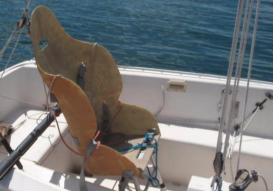
Sip and Puff Chair
This chair is the only one with full neck and back support. It sits in the middle of the boat, behind the sheets and traveler and also provides very good side support. The sailor uses the sip and puff system or a joystick control to move the tiller. The chair can accommodate upper thigh, lap, and chest buckles for additional support and stability while underway.
Instructional Videos
We’ve partnered with Pier’s Park Sailing Center in Boston, MA to create in-depth resources for all aspects of sailing. Learn more about their adaptive program here.
Think we’re missing something? Email [email protected] to help us fill the gaps.